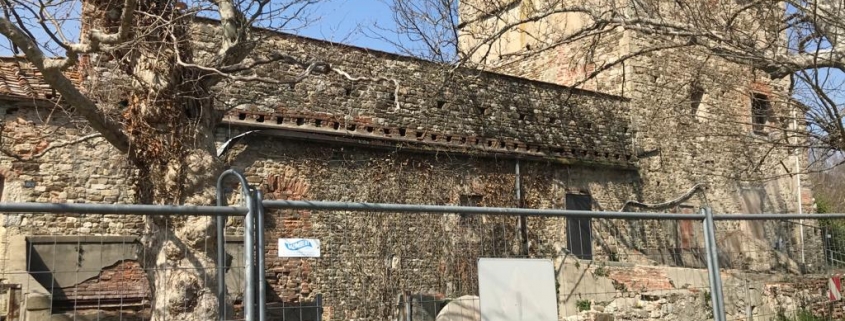The Fulling Mills in Remole
The Gualchiere (fulling mills) di Remole, located within territory of Bagno a Ripoli, provide the only tangible evidence of the old art of fulling wool.
The most expensive and complicated phase in wool processing was the fulling of the cloths, as it required extensive use of waterpower that had to be conveyed to the machines through a series of hydraulic engineering devices. The fulling mill consisted in, therefore, a series of coordinated devices whose task was to convey water, essentially creating a mechanical canalization system for the treatment of fabric.
Some of these elements are still visible in the Gualchiere di Remole structure. The mill was active starting in the 14th century and, different from the other fulling mills along the Arno, was located on the left bank of the river. The structure, which overlooks the Arno, can be reached via a series of (almost entirely 19th century) masonry bridges that allowed the passage over the canal used for conveying water to the machines (the head race). The building, characterized by its square plan and two massive crenelated towers, resembles a medieval castle, complete with a small hamlet on the opposite side of the main square traditionally reserved for the housing of the workers and storage spaces.
The hydraulic engineering framework, essential to the proper functioning of the enterprise, is of notable interest. The Sieci weir, almost 200 meters long, was built before behind a large bend in the Arno in order to create a large and deep basin able to both replenish the water supply in periods of drought and prevent flooding. There was also a small gatehouse for the winches that opened and closed the sluice gates, which allowed the passage of bundles of tree trunks that were traveling from Casentino to Florence, and the mechanisms used to regulate water flow in the canal.
The water wheels of the fulling mill were moved by a water flow that was adjustable thanks to special mechanisms, known as “docce”. The water arrived by means of inlet holes that can still be seen today when the water level is low. After passing through the machine the water was then drained back into the Arno on the other side.
These feats of engineering, datable to around the second half of the 14th century, evidence the masterful technical ability and creative intelligence of the designers. Credit is also due to the Albizi family for their promotion of the complex. The family owned the property until 1541, the year in which it was transferred to the Arte della Lana Guild.
Regarding the origins of the Remole complex, especially in light of its characteristic composition, there are two contrasting theories. On one hand it is believed that a building, a medieval castle dating to around the 10th century, existed there well before the wool trade took flight. Others sustain that, although the structure resembles that of a typical fortress, the excessive thinness of the walls signify that it could not have served the function of castle, and is therefore a new building constructed ex-novo around the 14th century, in fulfillment of the Opus Novarum Gualcherarum.
The decline of the Florentine wool industry put a stop to fulling at the Remole complex, its fulling mechanisms were replaced by grain mills to meet the mounting food demand of an expanding Florence.
This post is also available in: Italian



